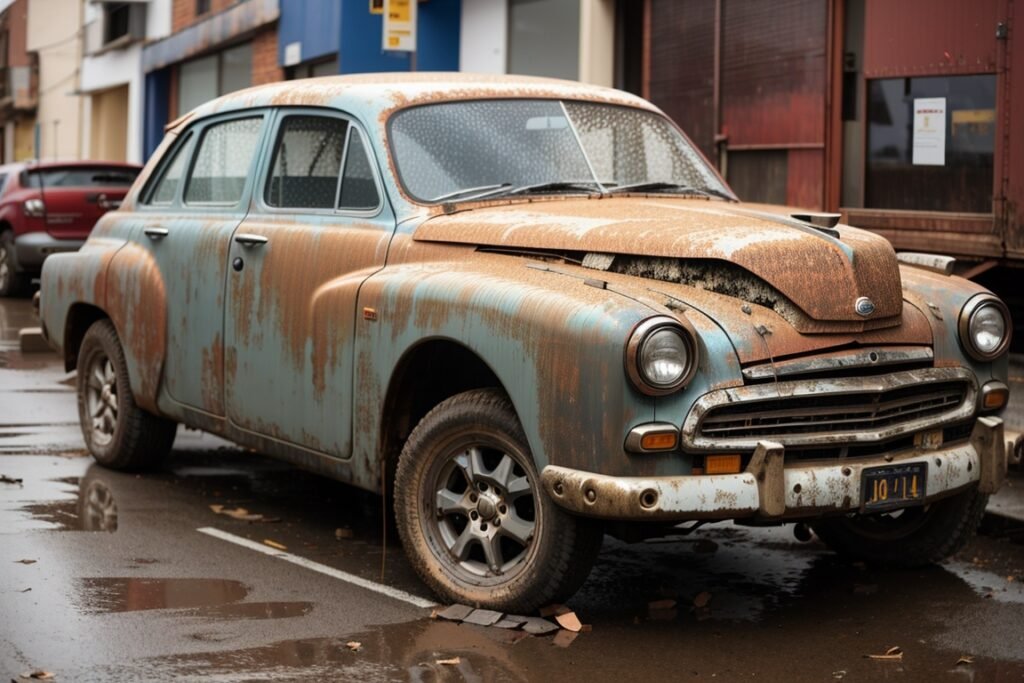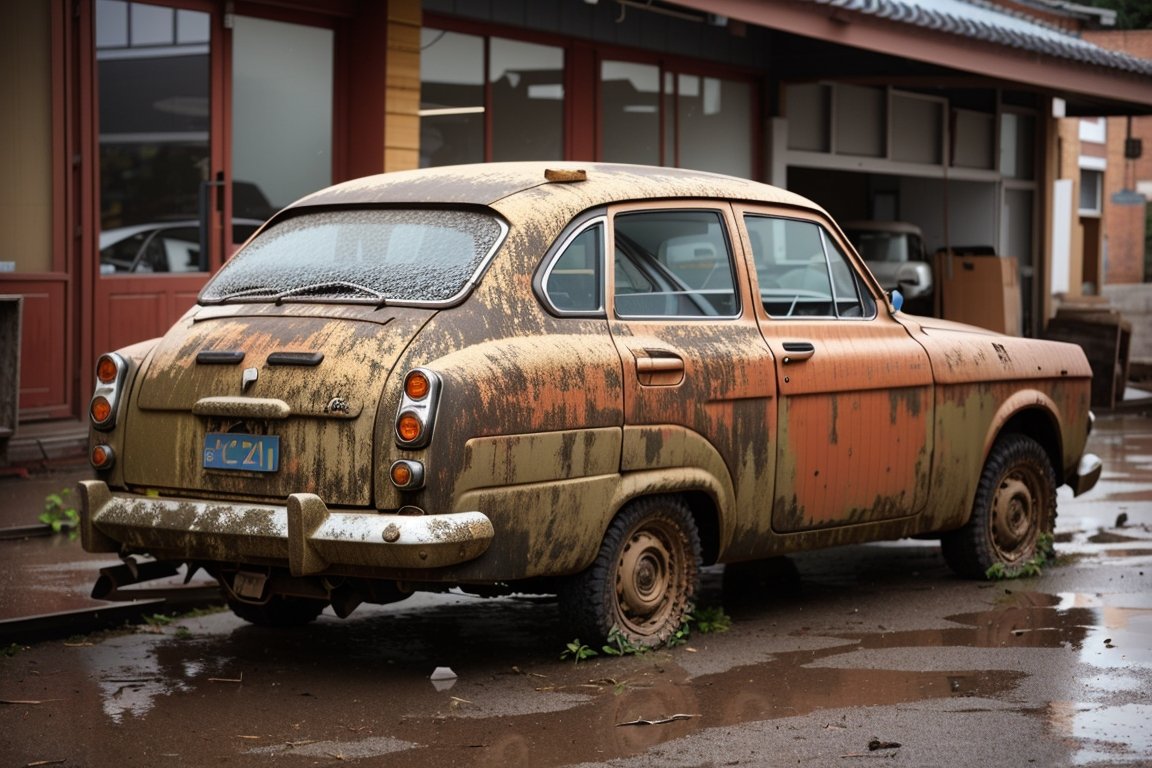
Buying a used car always involves some risk, but purchasing a vehicle that has suffered hail damage can be especially tricky. Hail storms can cause varying degrees of cosmetic and structural damage to cars, so it’s essential to carefully weigh the pros and cons before purchasing a hail-damaged vehicle.
Understanding Hail Damage
During hail season, storms can pelt cars with hailstones ranging from pea-sized to golf ball-sized or larger. The speed and size of hail and the length of exposure impacts the extent of damage. Common types of hail damage include:
- Dents – Small, shallow dings to large creases and dents.
- Paint Damage – Chipped, scratched, or fully removed paint exposing bare metal.
- Windshield Damage – Cracks, chips, and shattered windshields.
- Roof Damage – Dents and creases, especially on softer materials like vinyl.
- Hood Damage – The hood is one of the most vulnerable parts of a car during a hail storm.
Hail damage can be purely cosmetic, like small dents and paint chips. But it can also cause more serious structural issues like frame damage. An experienced auto body shop can fully assess hail damage during an inspection.
Pros of Buying a Hail-Damaged Car

There are some advantages to purchasing a car that has suffered hail damage:
- Significant Discounts – Vehicles with hail damage are often sold at a steep discount compared to similar vehicles without damage. Depending on severity, discounts of 40-60% off retail value are common.
- New Paint Job – Vehicles with paint damage are often repainted after a hail storm. This can give you a car with a brand-new, high-quality paint job.
- No Effect on Mechanicals – Assuming there is no frame damage, hail does not affect the mechanical operation or reliability of the vehicle. The engine, transmission, electronics, etc. are likely unaffected.
- Easier Financing – Lenders may offer better terms and lower interest rates on hail-damaged cars versus similar vehicles without damage. This makes it easier to get financing.
- Insurance Savings – Car insurance premiums are based partially on the vehicle’s value. The lower value of a hail-damaged car can mean lower insurance costs.
Cons of Buying a Hail Damaged Car
However, there are also some significant drawbacks to purchasing a vehicle with hail damage:
- Diminished Resale Value – Vehicles with a hail damage history have much lower resale value. This is especially true if the title is branded as “salvage” or “rebuilt”.
- Undetected Damage – Some hail damage, like frame damage or rust, can be difficult to detect during a standard inspection. These issues may surface later on.
- Repair Costs – While discounts can be substantial, full repair costs on a significantly damaged vehicle can still be high. Labor and paintwork are expensive.
- Insurance Difficulties – Major hail damage can make comprehensive and collision coverage more expensive or difficult to obtain, depending on the insurer.
- Loan Denial – Banks and lenders are often reluctant to finance vehicles with salvage/rebuilt titles or extensive hail damage history. Financing may be unavailable.
- Stigma – Some buyers avoid vehicles with any damage history, making the car harder to sell later on.
Inspecting Hail Damaged Vehicle

Carefully inspecting for hail damage is crucial before purchasing a car. Warning signs to look for include:
- Obvious dents, creases, and scratches on the exterior
- Paint damage like chipping, peeling, overspray, or mismatched panels
- Aftermarket parts like a replaced hood or windshield
- Rust around dents, seams, and edges
- Damage in hard-to-see areas like the roof and hood underside
Ideally, have a professional auto body shop put the car on a lift and fully inspect the undercarriage, frame, mechanicals, and electronics for any hidden issues. Obtain a full repair estimate as well.
Checking the Car With Hail Damage.
Please look over the vehicle history report thoroughly before you purchase it. Resources like Carfax can reveal:
- Official damage history, including hail and any repairs
- Salvage title or “rebuilt” branding
- Accident history that may be related to hail damage
- Title inconsistencies like mileage discrepancies
Ask the seller for documentation like insurance claims and repair invoices. Be wary of any gaps in the car’s history.
Questions for the Seller
Asking the right questions is key when buying a hail-damaged car:
- What is the extent of the hail damage? How many dents? Was the windshield replaced?
- Did you file an insurance claim? Can I see the claim documents?
- Were there any mechanical issues or frame damage identified?
- Have all repairs been completed properly at a reputable shop?
- Why are you selling – is the damage more extensive than you’re letting on?
- Can you provide a detailed repair estimate and documentation?
Negotiating the Price, Repair, or Buy a Car With Hail.

Use hail damage to your advantage when negotiating price:
- Start with a low offer at about 50% or lower retail value.
- Point out that repairs will be expensive. Offer to split the difference in repair costs.
- Just so you know, hidden issues may surface down the road, requiring more repairs.
- Could you mention that the car will be difficult for you to resell later on?
- Make the seller prove the repairs were done properly and there’s no frame damage.
Research and smart negotiating make significant savings possible on a hail-damaged car. But please avoid overpaying or failing to uncover major mechanical issues that aren’t listed below the dents. Careful inspection and a thorough test drive are a must.
Is Buying a Hail Damaged Car Right for You?
Purchasing a hail-damaged vehicle can be a good option under the right circumstances, but it carries definite risks. It makes the most sense for mechanically-inclined buyers on a tight budget who plan to drive the car long-term. The risks are lower if the damage is minor and purely cosmetic. However, extensive repairs, complex underlying issues, and financing difficulties can quickly turn a deal sour. Please be sure to proceed with caution and patience to score the hail sale of the century.
Q: Can I buy a car with hail damage?
A: It is possible to buy a car with hail damage. Many car dealerships and insurance companies sell hail-damaged vehicles at discounted prices.
Q: How can I repair hail damage on my car?
A: There are several methods to repair hail damage on a car. The most popular and cost-effective method is paintless dent repair (PDR), which involves removing dents without the need for repainting.
Q: Can severe hail damage devalue a car?
A: Yes, severe hail damage can significantly devalue a car. The damage’s extent can affect the vehicle’s overall condition and appearance, reducing its market value.
Q: How much does hail damage repair cost?
A: The cost to repair hail damage can vary depending on the extent of the damage and the type of repair method used. On average, paintless dent repair for minor hail damage can cost anywhere from $75 to $150 per dent, while more severe damage may require traditional auto body repair, which can be more expensive.
Q: What are the benefits of paintless dent repair for hail damage?
A: Paintless dent repair is a popular choice for repairing hail damage due to its cost-effectiveness and efficiency. It allows for the preservation of the original paint finish, retains the car’s resale value, and requires less time for repairs compared to traditional methods.
Q: Can I file an insurance claim for hail damage?
A: Yes, you can file an insurance claim for hail damage. Most insurance companies have provisions for hail damage coverage, and it is recommended to contact your insurance provider for more information on the claims process.
Q: Are there any myths about hail damage repair for cars?
A: There are several myths surrounding hail damage repair for cars. One common myth is that using hot water or a hairdryer can fix the dents, but this can actually damage the paint further. It is best to consult a professional for proper repair techniques.
Q: Can I purchase a hail-damaged vehicle directly from an insurance company?
A: Some insurance companies sell hail-damaged vehicles directly to the public. These vehicles are typically sold at discounted prices, but it is important to thoroughly inspect the vehicle and assess the extent of the damage before making a purchase.
Q: How does hail damage affect the value of a car?
A: Hail damage can affect the value of a car by decreasing its market price. Potential buyers may hesitate to purchase a car with visible hail damage, and it may be more difficult to sell the vehicle without repairs.
Q: What should I know about buying a hail-damaged car?
A: Before buying a hail-damaged car, it is important to thoroughly inspect the vehicle for damage and assess the repair costs. Consider the extent of the damage, the availability of repair options, and factor in the potential decrease in resale value.









Leave a Reply